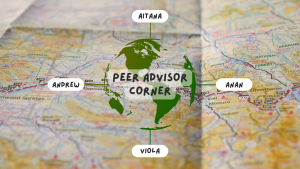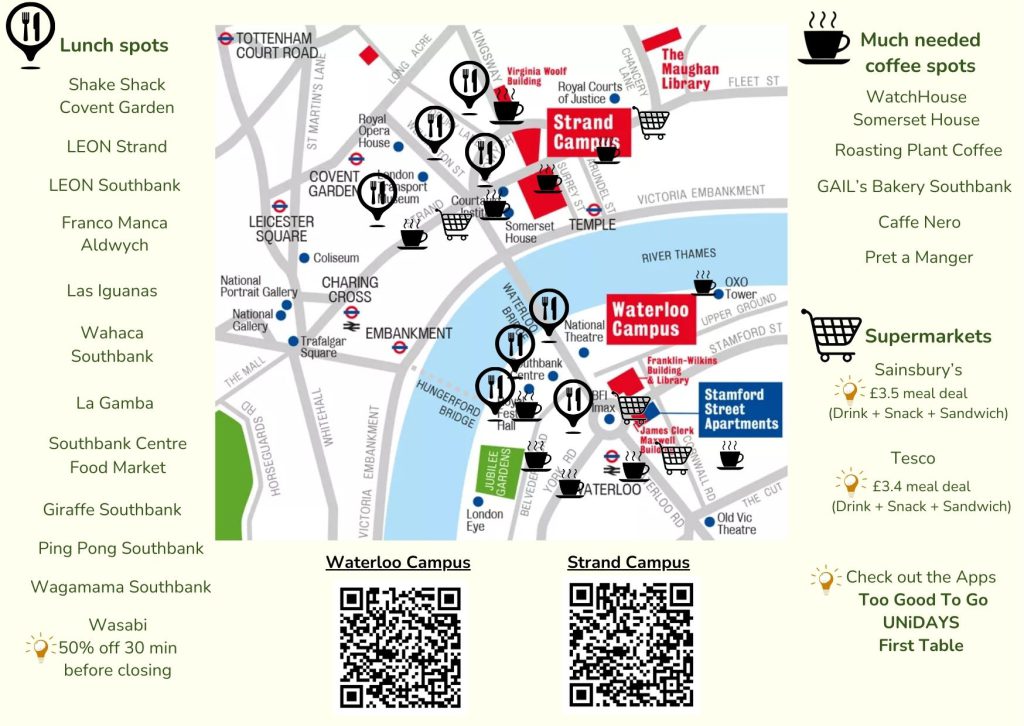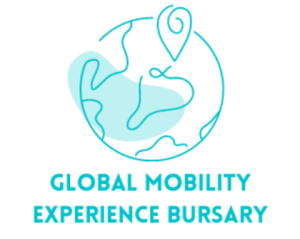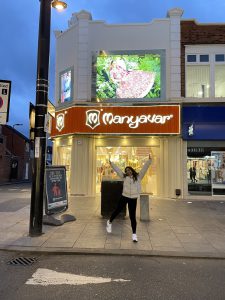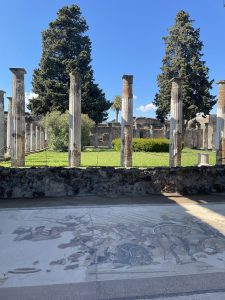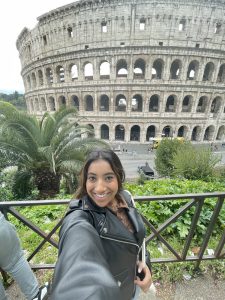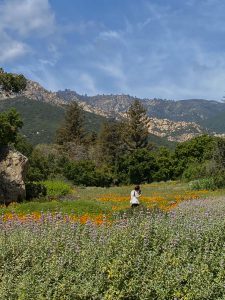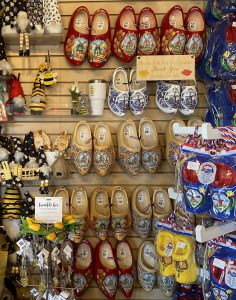
Hi there, I’m Aitana, one of the Global Mobility Peer Advisors here at King’s! For my Year Abroad, I went to Johns Hopkins University in Baltimore, US.
If you’re reading this, you are probably either thinking of applying to study abroad in the US yourself or have received an offer to do so and are feeling a little lost about the next steps (and believe me, I did too!). I’m going to share a couple of tips and tricks that I learned from my experience of applying to study abroad in the US. I hope you find this useful! 😃
P.S: Remember that I am speaking from my experience of applying to and studying in the US, at Johns Hopkins University, as a King’s Study Abroad student for the 2022-2023 academic year. You should do your own research to make sure all of these tips and tricks still apply to your specific case at the time of application. Any comments on visas are based on personal experience and none of them are official visa advise, you should follow the guidance of your host university and the relevant consulate.
Before you even think about applying to study abroad in the US, you have to think about (and do research on!!):
- The costs of applying to and living in the US, as a study abroad student: You should keep in mind that there are several things that you are going to have to pay for, such as…
- Visa application: You are most likely going to have to apply for a J-1 Visa (that’s the one the exchange students at Johns Hopkins, including myself, had to apply for, independent of which country our passport was from). You can use this J-1 Visa Pricing Calculator to identify the estimated cost of your J-1 visa application. This cost will vary depending on your country of residence and the length of your stay.
- J-1 application fee: $160. There is no way around this!
- J-1 Issuance fees: This is only applicable to certain countries; you can check if this applies to you here). The size of the issuance fee also varies by country. For example, for Australia it is $105, whereas for the United Arab Emirates it is $52.
- I-901 SEVIS Fee: $220, unless you are exempt (which I wasn’t).
- Cost of the host university shipping your DS-2019 to your home address: The cost will vary depending on your host university and home address. For me it was around $30 (to ship from Johns Hopkins University to my home address in Switzerland).
- Health insurance: All J-1 visa holders are required by the US Department of State to have health insurance for the full duration of their program.
- In many circumstances, you will be eligible for your host university’s health insurance coverage. Note that this means that you still have to pay, there is no way around this!!
- In my case, I paid $1148 per semester for the JHU student health insurance.
- Feeling a little lost about what to do next? I recommend that you look through your host university’s website to get an idea of:
- 1) whether you are required to pay the university’s health insurance coverage or whether you can (or have to) look for third party providers. that meet the J1 Visa requirements for health insurance coverage.
- 2) the cost of the health insurance coverage for the duration of your entire J-1 program.
- 3) what your health insurance covers.
- The academic calendar: American universities’ academic calendars are different to those of UK universities. I recommend that you look through your host university’s website to see their particular academic calendars as they may differ slightly. Here are some general key differences to keep in mind:
- Fall semester usually starts mid to late August and ends mid to late December.
- Why does it end so late?? Well, that’s because your last week or two are going to be Exam weeks (and so your fall semester is going to end earlier or later depending on your exam schedule).
- On the bright side, this means that you will have all your work for your Fall semester completed before the start of your Christmas break. Yes, that means no coursework due or exams to study for in January!
- Spring semester usually starts mid to late January and ends mid to late May.
- You can also enroll in the summer semester (if you want to and your J-1 program permits) to take classes at the university over summer. These will usually be more intensive classes with a load of 2-3 times above normal.
- Holidays will usually be:
- 2/3 weeks of winter vacation.
- 10-12 weeks of summer vacation.
- Fall break, Thanksgiving break, and Spring break will differ for each university and division within the university.
- Opening a US Bank Account: It is a good idea to open a US bank account.
- Why?
- You will need it to pay for things like your cell phone plan and your health insurance.
- It can cut down on international fees that your own bank may charge.
- Most checking accounts in the US are free to open!
- How? You can find more information on how to open a bank account in the US as an international student here and
- In my case, I was able to open a US bank account at the JHU Federal Credit Union (the university’s bank) for free, and with no Maintenance fees. I needed it to pay for my cell phone plan, fees to my host university (e.g., health insurance), and anything I wanted to buy online while I was there (e.g., anything on Amazon, events, supplies, books, etc.). I was not able to pay for any of these with anything but a US bank account!
- Why?
- Getting a US phone number: It is a good idea to get a US phone number.
- Why?
- Your own phone number may not work in the US.
- If your phone number does work in the US, you may have high roaming and phone call charges.
- You need an American phone number to sign up to certain things online (e.g., events, apps, etc.).
- How? You can find more information on how to get an American phone number as an international student here.
- I would recommend getting an American bank account before you get an American phone number as you need an American Bank account to pay for your cell phone plan.
- Why?
- The American teaching style, and how it differs from that in the UK: Here are some of the general key differences between the American and the UK teaching styles that you should keep in mind…
- Instead of having a few big assessments for a module that each count for a big percentage of your final grade, you will have lots of little assessments (usually on a weekly basis), each worth smaller percentages of your final grade. In my case, whilst King’s Bioscience modules usually use two assessment components (that is, an exam and an in-course assessment component), each worth 60-70% and 30-40% of the final mark for the module respectively, JHU used numerous assessment components, administered on a weekly basis, each usually worth from 1 to 20% of the final mark for the module.
- Instead of 70% and above being a first, 70% and above in the US is a C- (which is the minimum grade you need to pass). When I first heard this, I got really stressed, but don’t worry, it is A LOT easier to get a 70% in the US compared to the UK, and most people get 80-90%. You can find more details on this here.
- In non-lecture-based modules, attendance and participation can be a part of your grade.
- The Visa application process & other paperwork: There is A LOT of paperwork you need to do once you get an offer to study abroad in the US. Make sure to do your research on this and ideally start the Visa application process as soon as you receive your offer to avoid any delays.
- Getting part-time work as an international student: If you were thinking of getting a part-time job while you study in the US to pay for some of the costs, you need to keep in mind that you will have some limitations depending on your Visa type. As a J-1 Visa holder, I was allowed to work up to 20 hours per week and this needed to be on-campus. You will only be allowed to work off-campus if you are faced with an unforeseen economic hardship which arises after acquiring your J/1 status. You can find more information on securing part-time employment as a J-1 Visa holder here. Things do change quite quickly so do check the rules once you are at the host university to establish weather you can work or not.
- Fall semester usually starts mid to late August and ends mid to late December.
- Visa application: You are most likely going to have to apply for a J-1 Visa (that’s the one the exchange students at Johns Hopkins, including myself, had to apply for, independent of which country our passport was from). You can use this J-1 Visa Pricing Calculator to identify the estimated cost of your J-1 visa application. This cost will vary depending on your country of residence and the length of your stay.





